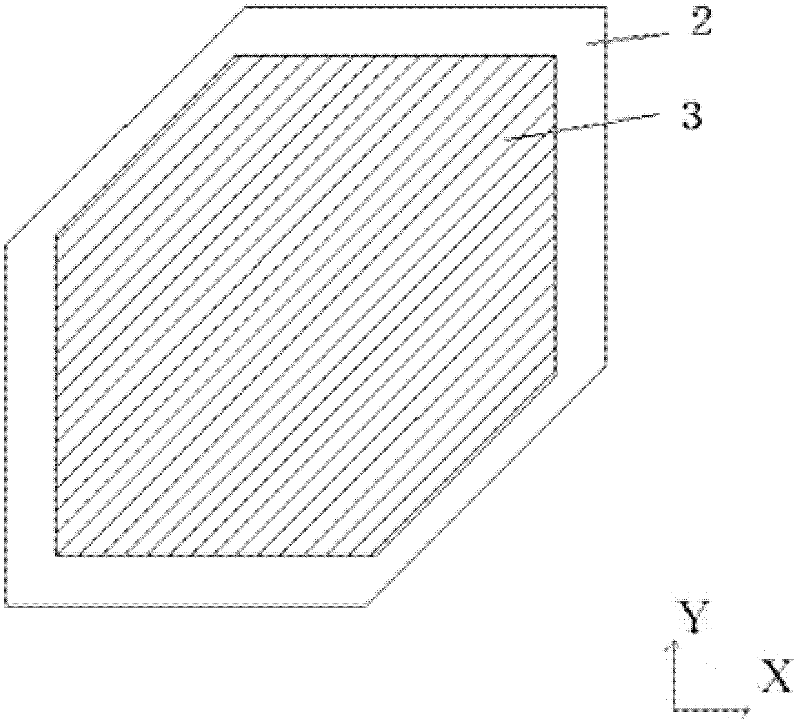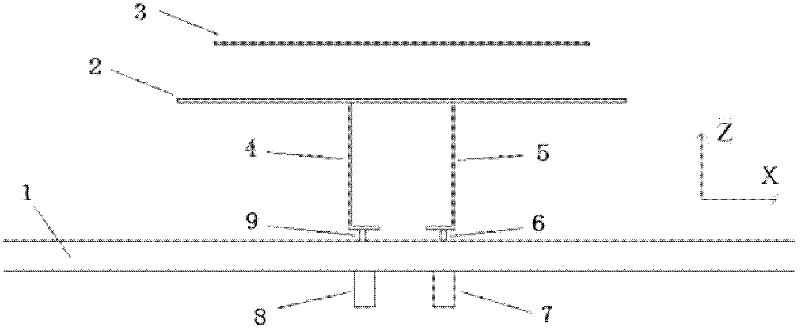Circularly polarized differential feed patch antenna
An electric patch and circular polarization technology, applied in the field of antennas in the field of wireless communications, can solve problems affecting antenna radiation performance, amplitude and phase imbalance, loss, etc.
- Summary
- Abstract
- Description
- Claims
- Application Information
AI Technical Summary
Problems solved by technology
Method used
Image
Examples
Embodiment
[0038]Both the first radiation patch 2 and the second radiation patch 3 are formed by cutting two diagonal corners of a square in parallel. The center frequency of the antenna is designed to be 2.2GHz. In the first radiation patch 2, the distance between the opposite sides of the square is 60mm, which corresponds to 0.44 times λo, where λo is the wavelength of free space. In the second radiation patch 3, the distance between the opposite sides of the square is 50 mm, which is a passive element. The vertical distance between the first radiation patch 2 and the horizontal substrate is 19 mm, which is approximately equal to 0.14λo. The distance between the first radiation patch 2 and the second radiation patch 3 is 5 mm. The first radiating patch 2 is fed differentially by a first L-shaped feed electrode plate 4 and a second L-shaped feed electrode plate 5, while the second radiating patch 3 is fed by electromagnetic coupling. Two diagonal corners of the first radiation patch 2 ...
PUM
 Login to View More
Login to View More Abstract
Description
Claims
Application Information
 Login to View More
Login to View More - R&D
- Intellectual Property
- Life Sciences
- Materials
- Tech Scout
- Unparalleled Data Quality
- Higher Quality Content
- 60% Fewer Hallucinations
Browse by: Latest US Patents, China's latest patents, Technical Efficacy Thesaurus, Application Domain, Technology Topic, Popular Technical Reports.
© 2025 PatSnap. All rights reserved.Legal|Privacy policy|Modern Slavery Act Transparency Statement|Sitemap|About US| Contact US: help@patsnap.com



